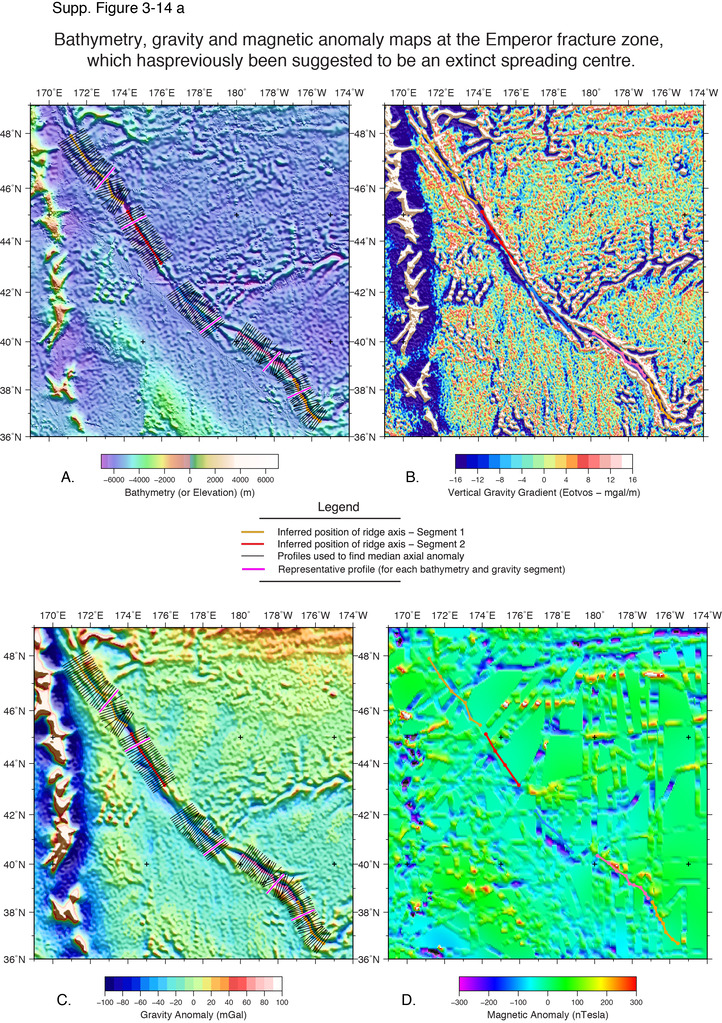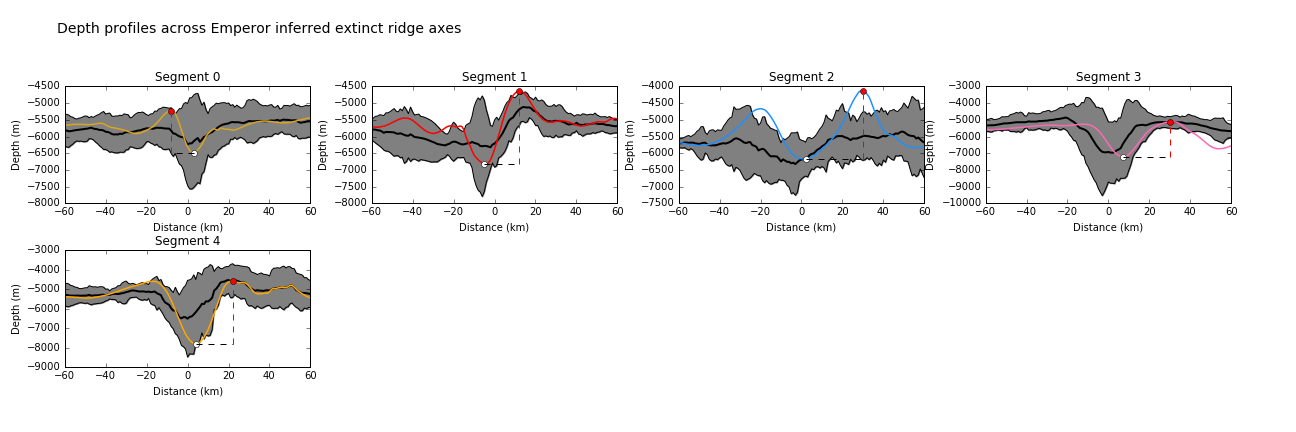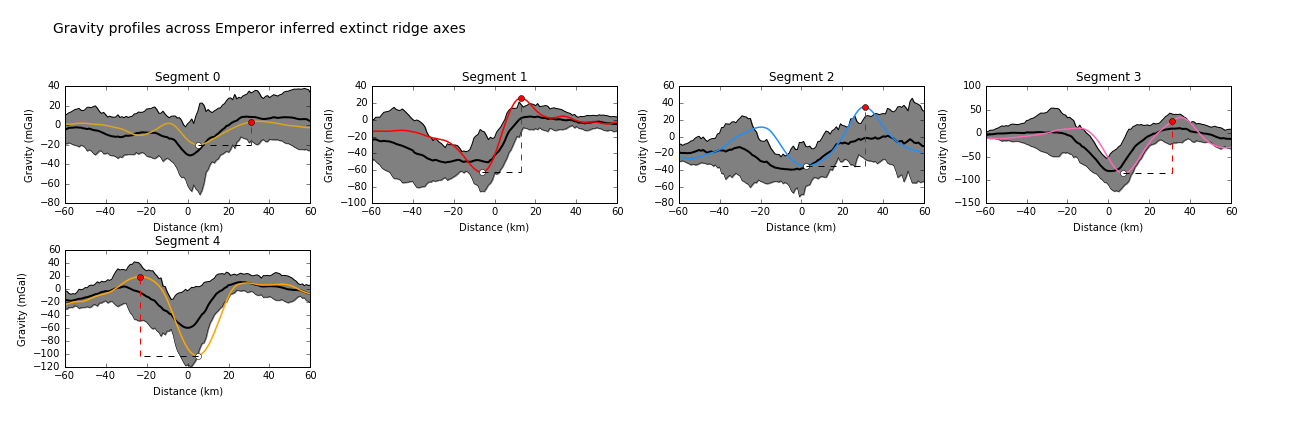| Ocean: | Pacific |
| Spreading center type: | Proposed as a possible large-scale extinct spreading center. |
Mammerickx and Sharman (1988) suggested that the Emperor Trough may have been one-arm of an extinct triple-junction spreading centre between the Kula-Pacific-Farallon plate boundaries prior to anomaly C34, although they note that lineations cannot be “unambiguously” identified on either side of the fracture zone. However, from updated satellite gravity data it is difficult to conceive of this structure as anything other than a transform fault given the tectonic fabric of the region and the morphology of the fracture zone, which has characteristic fault-scarp form. In addition, later works have provided more detail regarding the development of the Shatsky Rise and it is likely that the former Pacific-Farallon plate boundary is obscured within the volcanic plateaus to the west, rather than at the Emperor fracture zone. The 2000 m of relief that the fracture zone maintains along its length is greater than the mean relief of well-defined extinct ridges, particularly those found in older oceanic crust.
Atwater et al. (1993) were not convinced that the Emperor FZ is an extinct spreading centre, however they consider whether secondary spreading may have occurred along this fracture zone, due to plate rupture (tearing), in a similar fashion as the fragmentation of the Farallon plate which led to spreading at the Cocos-Nazca Ridge.
We reviewed more recent literature and reconstructions of the region and assessed profiles across the inferred axis of the structure. Profiles show that, particularly in the north, there is significant asymmetry across the fracture zone which suggests that the structure represents an oceanic fracture zone, separating crust of different ages rather than extinct spreading centre formed crust that would be expected to have subsided symmetrically about the axis. We are not convinced that the Emperor fracture zone represents an extinct spreading ridge.
Atwater, T.M. et al., 1993. Fracture zone traces across the North Pacific Cretaceous quiet zone and their tectonic implications. The Mesozoic Pacific: Geology, tectonics, and volcanism, 77, pp.137–154.
Mammerickx, J. and Sharman, G.F., 1988. Tectonic evolution of the North Pacific during the Cretaceous quiet period. Journal of Geophysical Research, 93, p.3009.
Seton, M. et al., 2012. Global continental and ocean basin reconstructions since 200Ma. Earth-Science Reviews, 113(3-4), pp.212–270.


